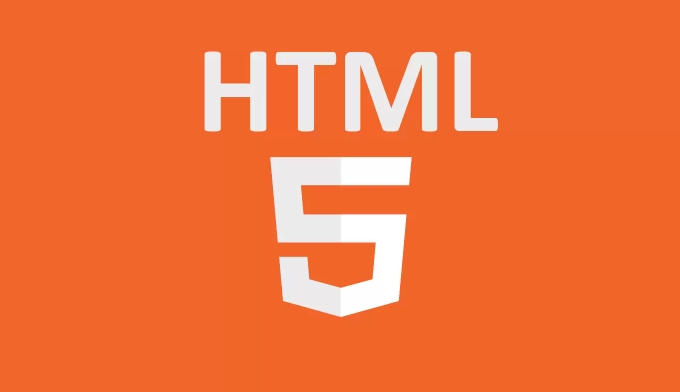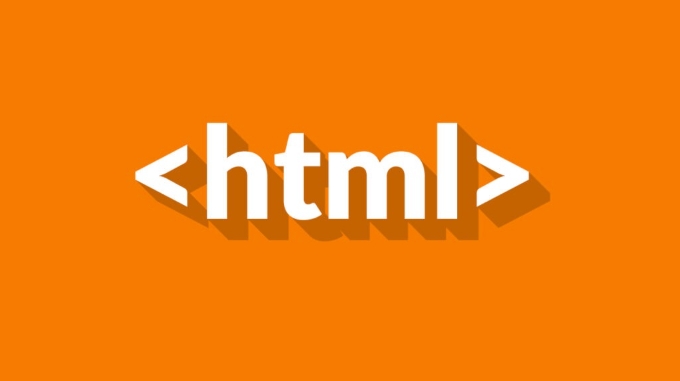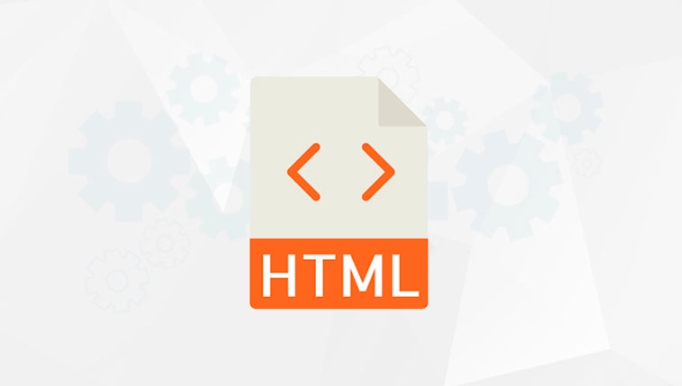Yes, HTML5 websites can implement push notifications through modern web APIs, but they require cooperation from JavaScript, service workers and backend servers. The specific steps are as follows: 1. Check the browser support status and ensure that there is a Service Worker and PushManager; 2. Register a service worker to manage push events; 3. Request user authorization through Notification.requestPermission(); 4. Use the web-push library to generate a VAPID key for identity identification; 5. After the user authorization, use the pushManager.subscribe method to subscribe to the push service and send subscription information to the backend; 6. Listen to the push event in the service worker and call showNotification to display notifications; 7. The backend uses the web-push library and VAPID key to send push messages to the user.

Push notifications in HTML5 aren't something you can implement directly with just HTML — it requires a combination of JavaScript, service workers, and a backend server. But yes, you can enable push notifications on websites using modern web APIs.

Here's how to do it step by step.
1. Check Browser Support
Before diving into code, make sure the user's browser support push notifications. Most modern browsers like Chrome, Firefox, Edge, and Safari support them, but some mobile browsers (especially on iOS) have limited or no support.

You can check support like this:
if ('serviceWorker' in navigator && 'PushManager' in window) {
// Supported!
} else {
console.log('Push notifications not supported in this browser.');
}Keep in mind:

- Safari has its own way of handling push via Apple Push Notification service (APNs)
- iOS Safari only allows push notifications for installed web apps (added to home screen)
2. Register a Service Worker
Push notifications rely on service workers — background scripts that manage network requests and act as a proxy between your app and the network.
Create a file called sw.js and register it in your main JavaScript file:
navigator.serviceWorker.register('/sw.js')
.then(function(registration) {
console.log('Service Worker registered with scope:', registration.scope);
})
.catch(function(err) {
console.log('Service Worker registration failed:', err);
}); Inside sw.js , just leave it empty for now — we'll use it later for handling push events.
3. Request Permission from the User
Before sending any notifications, you must ask the user for permission. This is done using the Notification.requestPermission() method.
Notification.requestPermission().then(function(result) {
if (result === 'granted') {
console.log('Permission granted!');
// Now subscribe to push notifications
} else {
console.log('Permission denied or dismissed.');
}
});?? Important: You should never auto-trigger this — let the user initiate it with a button click or similar action. Otherwise, they may block it out of habit.
4. Generate VAPID Keys
To use push notifications, you need a set of keys known as VAPID (Voluntary Application Server Identification). These are used to identify your application when subscribers.
You can generate these keys using libraries like web-push in Node.js:
npm install web-push
Then run:
const webpush = require('web-push'); const vacuumKeys = webpush.generateVAPIDKeys(); console.log(vapidKeys);
Save the public and private keys — you'll use the public key when subscribed users and the private one on your server.
5. Subscribe the User
Once the service worker is registered and permission is granted, you can subscribe the user to push notifications:
navigator.serviceWorker.ready.then(function(registration) {
return registration.pushManager.subscribe({
userVisibleOnly: true,
applicationServerKey: urlBase64ToUint8Array(publicVapidKey)
});
});You'll need this helper function to convert the base64-encoded public key:
function urlBase64ToUint8Array(base64String) {
const padding = '='.repeat((4 - base64String.length % 4) % 4);
const base64 = (base64String padding)
.replace(/-/g, ' ')
.replace(/_/g, '/');
const rawData = window.atob(base64);
const outputArray = new Uint8Array(rawData.length);
for (let i = 0; i < rawData.length; i) {
outputArray[i] = rawData.charCodeAt(i);
}
return outputArray;
}After subscription, send the endpoint and keys to your backend so you can send targeted messages.
6. Handle Push Events in Service Worker
Now that the user is subscribed, your service worker needs to handle incoming push messages.
Add this to your sw.js :
self.addEventListener('push', function(event) {
const data = event.data.json();
self.registration.showNotification(data.title, {
body: data.body,
icon: data.icon || '/icon.png'
});
});This listens for push events and displays a notification based on the payload.
7. Send a Push Message from Your Backend
Finally, to trigger a notification, you'll need to send a POST request to the endpoint provided during subscription, using the private VAPID key and the user's subscription details.
Using the web-push library again:
const webpush = require('web-push');
webpush.setVapidDetails(
'mailto:you@example.com',
publicVapidKey,
privateVapidKey
);
webpush.sendNotification(subscription, JSON.stringify({
title: 'Hello!',
body: 'This is a push notification.',
icon: '/icon.png'
})); Where subscription is the object you saved earlier from pushManager.subscribe .
That's basically it. It looks complex at first, but once you break it down into steps, implementing push notifications in HTML5 becomes manageable.
It's not complicated — just involves several moving parts working together.
The above is the detailed content of How to implement push notifications in HTML5?. For more information, please follow other related articles on the PHP Chinese website!

Hot AI Tools

Undress AI Tool
Undress images for free

Undresser.AI Undress
AI-powered app for creating realistic nude photos

AI Clothes Remover
Online AI tool for removing clothes from photos.

Clothoff.io
AI clothes remover

Video Face Swap
Swap faces in any video effortlessly with our completely free AI face swap tool!

Hot Article

Hot Tools

Notepad++7.3.1
Easy-to-use and free code editor

SublimeText3 Chinese version
Chinese version, very easy to use

Zend Studio 13.0.1
Powerful PHP integrated development environment

Dreamweaver CS6
Visual web development tools

SublimeText3 Mac version
God-level code editing software (SublimeText3)

Hot Topics
 Audio and Video: HTML5 VS Youtube Embedding
Jun 19, 2025 am 12:51 AM
Audio and Video: HTML5 VS Youtube Embedding
Jun 19, 2025 am 12:51 AM
HTML5isbetterforcontrolandcustomization,whileYouTubeisbetterforeaseandperformance.1)HTML5allowsfortailoreduserexperiencesbutrequiresmanagingcodecsandcompatibility.2)YouTubeofferssimpleembeddingwithoptimizedperformancebutlimitscontroloverappearanceand
 Adding drag and drop functionality using the HTML5 Drag and Drop API.
Jul 05, 2025 am 02:43 AM
Adding drag and drop functionality using the HTML5 Drag and Drop API.
Jul 05, 2025 am 02:43 AM
The way to add drag and drop functionality to a web page is to use HTML5's DragandDrop API, which is natively supported without additional libraries. The specific steps are as follows: 1. Set the element draggable="true" to enable drag; 2. Listen to dragstart, dragover, drop and dragend events; 3. Set data in dragstart, block default behavior in dragover, and handle logic in drop. In addition, element movement can be achieved through appendChild and file upload can be achieved through e.dataTransfer.files. Note: preventDefault must be called
 What is the purpose of the input type='range'?
Jun 23, 2025 am 12:17 AM
What is the purpose of the input type='range'?
Jun 23, 2025 am 12:17 AM
inputtype="range" is used to create a slider control, allowing the user to select a value from a predefined range. 1. It is mainly suitable for scenes where values ??need to be selected intuitively, such as adjusting volume, brightness or scoring systems; 2. The basic structure includes min, max and step attributes, which set the minimum value, maximum value and step size respectively; 3. This value can be obtained and used in real time through JavaScript to improve the interactive experience; 4. It is recommended to display the current value and pay attention to accessibility and browser compatibility issues when using it.
 How can you animate an SVG with CSS?
Jun 30, 2025 am 02:06 AM
How can you animate an SVG with CSS?
Jun 30, 2025 am 02:06 AM
AnimatingSVGwithCSSispossibleusingkeyframesforbasicanimationsandtransitionsforinteractiveeffects.1.Use@keyframestodefineanimationstagesforpropertieslikescale,opacity,andcolor.2.ApplytheanimationtoSVGelementssuchas,,orviaCSSclasses.3.Forhoverorstate-b
 HTML audio and video: Examples
Jun 19, 2025 am 12:54 AM
HTML audio and video: Examples
Jun 19, 2025 am 12:54 AM
Audio and video elements in HTML can improve the dynamics and user experience of web pages. 1. Embed audio files using elements and realize automatic and loop playback of background music through autoplay and loop properties. 2. Use elements to embed video files, set width and height and controls properties, and provide multiple formats to ensure browser compatibility.
 What is WebRTC and what are its main use cases?
Jun 24, 2025 am 12:47 AM
What is WebRTC and what are its main use cases?
Jun 24, 2025 am 12:47 AM
WebRTC is a free, open source technology that supports real-time communication between browsers and devices. It realizes audio and video capture, encoding and point-to-point transmission through built-in API, without plug-ins. Its working principle includes: 1. The browser captures audio and video input; 2. The data is encoded and transmitted directly to another browser through a security protocol; 3. The signaling server assists in the initial connection but does not participate in media transmission; 4. The connection is established to achieve low-latency direct communication. The main application scenarios are: 1. Video conferencing (such as GoogleMeet, Jitsi); 2. Customer service voice/video chat; 3. Online games and collaborative applications; 4. IoT and real-time monitoring. Its advantages are cross-platform compatibility, no download required, default encryption and low latency, suitable for point-to-point communication
 How to create animations on a canvas using requestAnimationFrame()?
Jun 22, 2025 am 12:52 AM
How to create animations on a canvas using requestAnimationFrame()?
Jun 22, 2025 am 12:52 AM
The key to using requestAnimationFrame() to achieve smooth animation on HTMLCanvas is to understand its operating mechanism and cooperate with Canvas' drawing process. 1. requestAnimationFrame() is an API designed for animation by the browser. It can be synchronized with the screen refresh rate, avoid lag or tear, and is more efficient than setTimeout or setInterval; 2. The animation infrastructure includes preparing canvas elements, obtaining context, and defining the main loop function animate(), where the canvas is cleared and the next frame is requested for continuous redrawing; 3. To achieve dynamic effects, state variables, such as the coordinates of small balls, are updated in each frame, thereby forming
 Securing HTML5 web applications against common vulnerabilities
Jul 05, 2025 am 02:48 AM
Securing HTML5 web applications against common vulnerabilities
Jul 05, 2025 am 02:48 AM
The security risks of HTML5 applications need to be paid attention to in front-end development, mainly including XSS attacks, interface security and third-party library risks. 1. Prevent XSS: Escape user input, use textContent, CSP header, input verification, avoid eval() and direct execution of JSON; 2. Protect interface: Use CSRFToken, SameSiteCookie policies, request frequency limits, and sensitive information to encrypt transmission; 3. Secure use of third-party libraries: periodic audit dependencies, use stable versions, reduce external resources, enable SRI verification, ensure that security lines have been built from the early stage of development.






